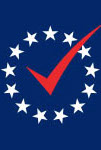Date Published: 2019-04-26
Author(s):
Charles Stewart III, Massachusetts Institute of Technology
R. Michael Alvarez, California Institute of Technology
Stephen S. Pettigrew, University of Pennsylvania
Cameron Wimpy, Massachusetts Institute of Technology
Abstract:
We analyze the significant increase in the residual vote rate in the 2016 presidential election. The residual vote rate, which is the percentage of ballots cast in a presidential election that contain no vote for president, rose nationwide from 0.99% to 1.41% between 2012 and 2016. The primary explanation for this rise is an increase in abstentions, which we argue results primarily from disaffected Republicans more than from alienated Democrats. In addition, other factors related to election administration and electoral competition also explain variation in the residual vote rates across states, particularly the use of mail/absentee ballots and the lack of competition at the top of the ticket in non-battleground states. However, we note that the rise in the residual vote rate was not due changes in voting technologies. The analysis relies on a combination of public opinion and election return data to address these issues.
